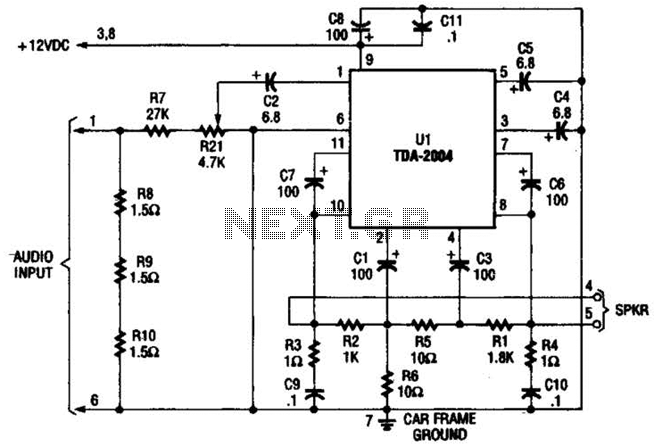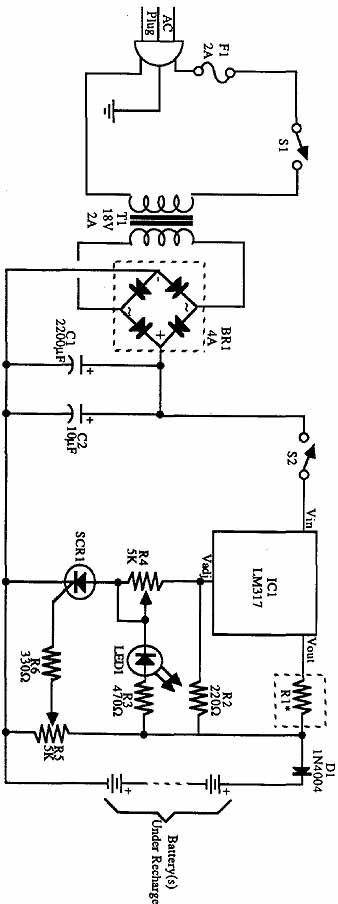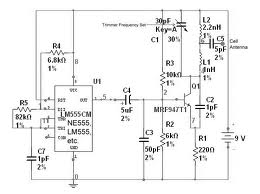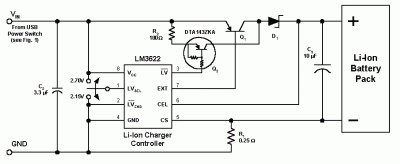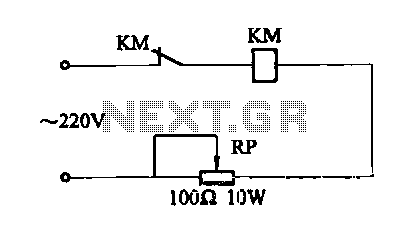
5V power supply using 7805 IC with circuit diagram
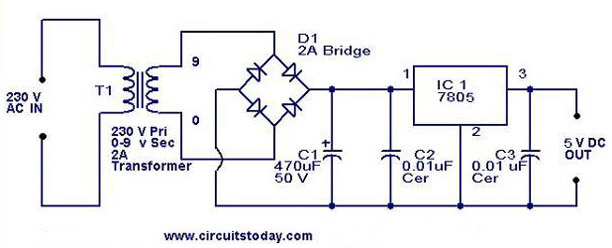
A 5V power supply using IC 7805 is designed and explained with a neat circuit diagram.
The circuit for a 5V power supply utilizing the IC 7805 voltage regulator is a straightforward and efficient design that provides a stable output voltage of 5 volts from a higher input voltage. The IC 7805 is a linear voltage regulator that can handle input voltages ranging from 7V to 35V, making it suitable for various applications where a regulated 5V supply is required.
The basic schematic of the circuit consists of the following components:
1. **Input Capacitor (C1)**: A capacitor, typically in the range of 0.33μF, is connected at the input of the 7805. This capacitor helps to filter out any high-frequency noise from the input voltage source, ensuring a cleaner input signal for the regulator.
2. **Voltage Regulator (IC 7805)**: The central component of the circuit is the 7805 voltage regulator. It has three terminals: the input (Vin), ground (GND), and output (Vout). The input terminal receives the higher voltage, the ground terminal is connected to the circuit ground, and the output terminal provides the regulated 5V output.
3. **Output Capacitor (C2)**: A capacitor, usually around 0.1μF, is connected to the output of the 7805. This capacitor serves to improve the transient response of the regulator and filter any output noise, ensuring that the output voltage remains stable under varying load conditions.
4. **Heat Sink**: Depending on the load current drawn from the regulator, a heat sink may be required to dissipate heat generated by the 7805. The maximum output current for the 7805 is typically 1A, and if the voltage drop across the regulator is significant, the heat generated can exceed safe operating temperatures without a heat sink.
The circuit operates by allowing the input voltage to pass through the 7805, which internally regulates the voltage down to 5V. The output voltage is maintained constant despite variations in the input voltage or the load current, as long as the input voltage remains within the specified range and the load does not exceed the current limit.
This 5V power supply circuit is widely used in various electronic projects, including microcontroller power supplies, sensor circuits, and other applications requiring a stable 5V source. The simplicity of the design, along with the availability of the 7805 component, makes it a popular choice among engineers and hobbyists alike.A 5V power supply using IC 7805 is designed and explained with a neat circuit diagram.. 🔗 External reference
The circuit for a 5V power supply utilizing the IC 7805 voltage regulator is a straightforward and efficient design that provides a stable output voltage of 5 volts from a higher input voltage. The IC 7805 is a linear voltage regulator that can handle input voltages ranging from 7V to 35V, making it suitable for various applications where a regulated 5V supply is required.
The basic schematic of the circuit consists of the following components:
1. **Input Capacitor (C1)**: A capacitor, typically in the range of 0.33μF, is connected at the input of the 7805. This capacitor helps to filter out any high-frequency noise from the input voltage source, ensuring a cleaner input signal for the regulator.
2. **Voltage Regulator (IC 7805)**: The central component of the circuit is the 7805 voltage regulator. It has three terminals: the input (Vin), ground (GND), and output (Vout). The input terminal receives the higher voltage, the ground terminal is connected to the circuit ground, and the output terminal provides the regulated 5V output.
3. **Output Capacitor (C2)**: A capacitor, usually around 0.1μF, is connected to the output of the 7805. This capacitor serves to improve the transient response of the regulator and filter any output noise, ensuring that the output voltage remains stable under varying load conditions.
4. **Heat Sink**: Depending on the load current drawn from the regulator, a heat sink may be required to dissipate heat generated by the 7805. The maximum output current for the 7805 is typically 1A, and if the voltage drop across the regulator is significant, the heat generated can exceed safe operating temperatures without a heat sink.
The circuit operates by allowing the input voltage to pass through the 7805, which internally regulates the voltage down to 5V. The output voltage is maintained constant despite variations in the input voltage or the load current, as long as the input voltage remains within the specified range and the load does not exceed the current limit.
This 5V power supply circuit is widely used in various electronic projects, including microcontroller power supplies, sensor circuits, and other applications requiring a stable 5V source. The simplicity of the design, along with the availability of the 7805 component, makes it a popular choice among engineers and hobbyists alike.A 5V power supply using IC 7805 is designed and explained with a neat circuit diagram.. 🔗 External reference
